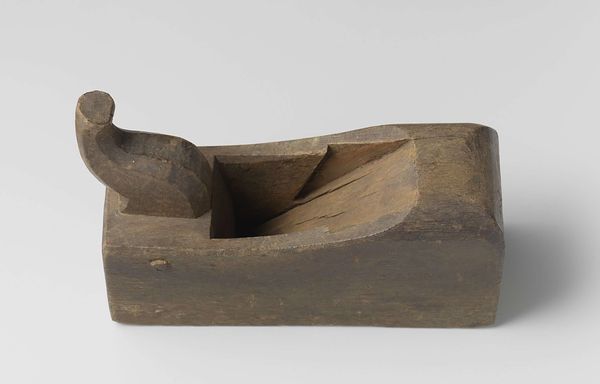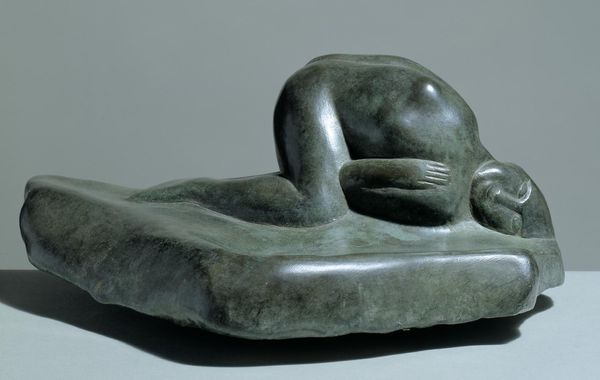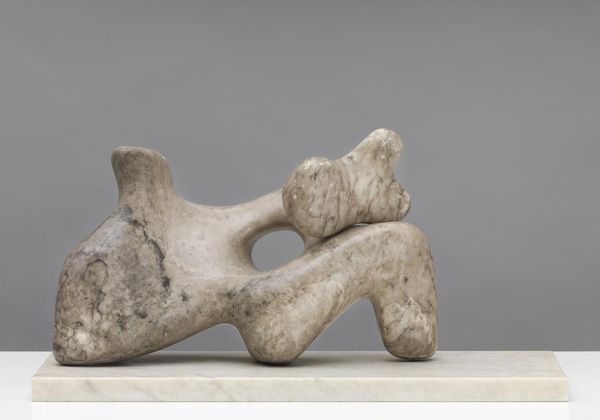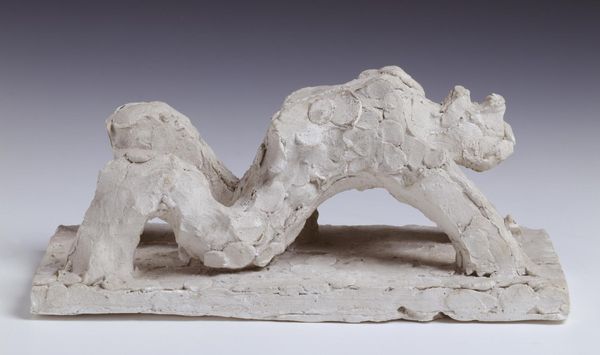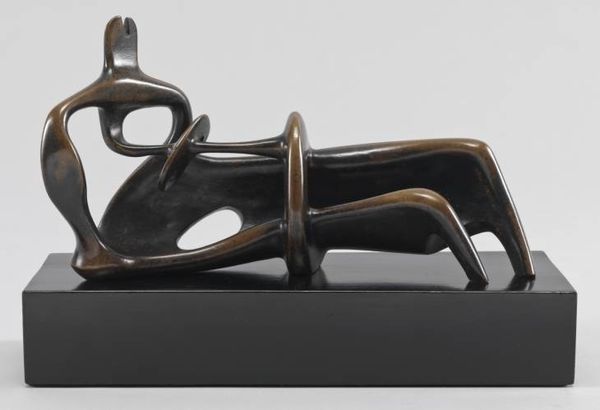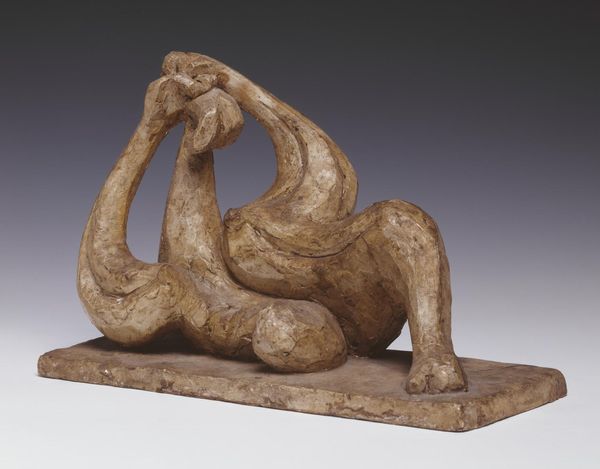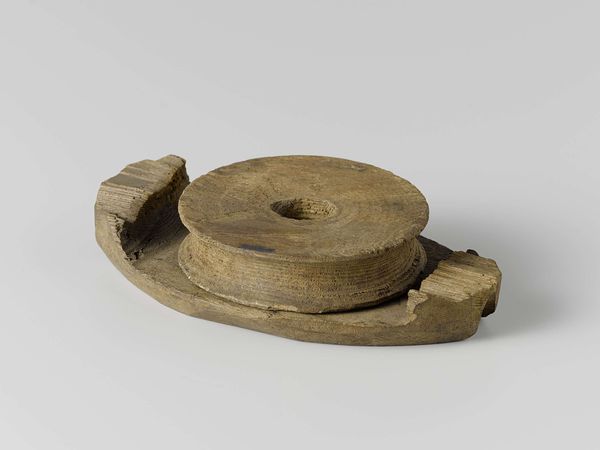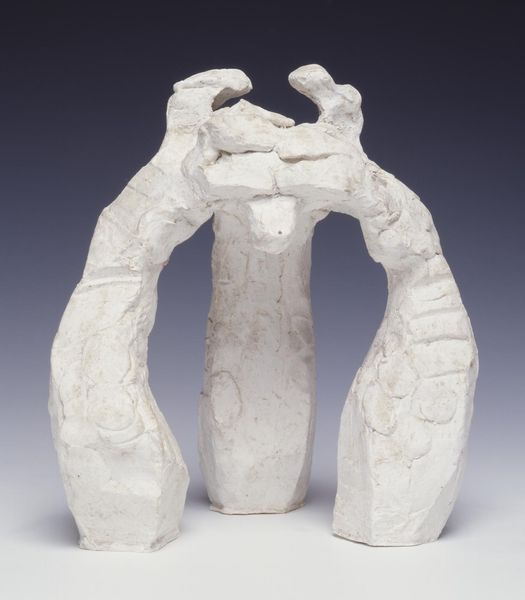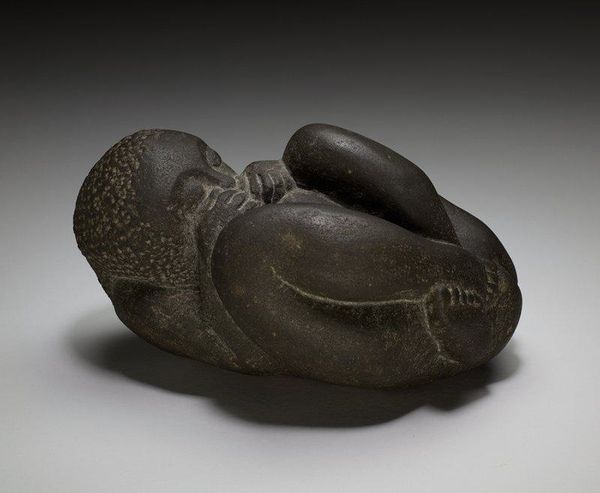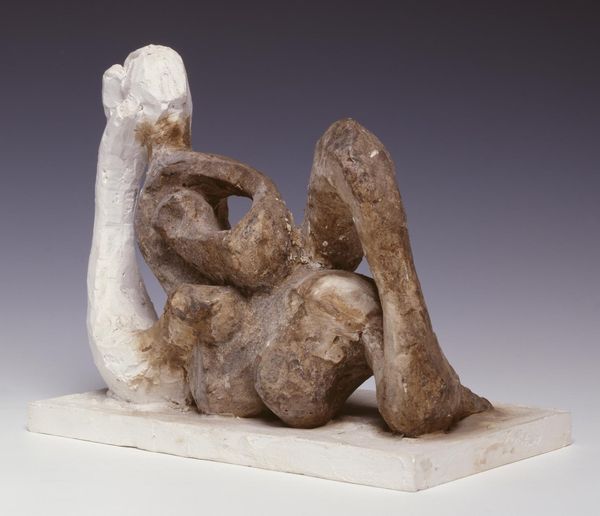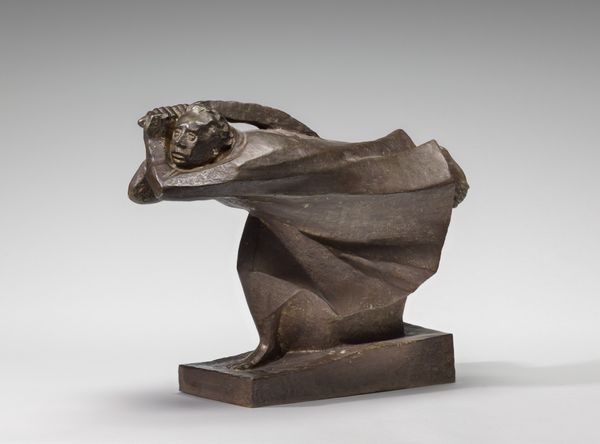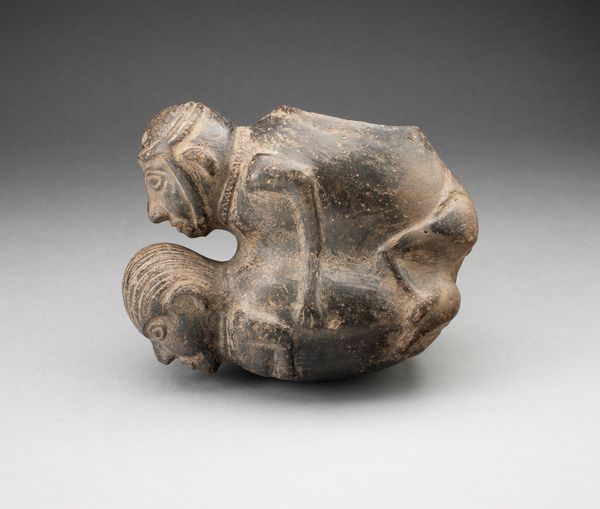
Dimensions: displayed: 100 x 208 x 66 mm, 1.2 kg
Copyright: © Bowness, Hepworth Estate | CC-BY-NC-ND 4.0 DEED, Photo: Tate
Editor: This is Barbara Hepworth’s "Model for Sculpture for Waterloo Bridge," housed at the Tate. I'm struck by the raw materiality of the stone itself. How did Hepworth's process of carving contribute to the sculpture’s meaning? Curator: Consider Hepworth's direct carving method. She engaged intimately with the stone, respecting its inherent qualities. This process, a physical dialogue with the material, contrasts with more industrial approaches, doesn’t it? It highlights the labor and skill involved in transforming raw material into art. Editor: It does! So, the act of making itself becomes a statement? Curator: Precisely. And consider how this handmade object exists within the context of mass production. It raises questions about value, labor, and the role of the artist in a changing society. What does it mean to create something by hand when so much is machine-made? Editor: That reframes the sculpture for me. It’s not just about form, but also about production. Curator: Absolutely. By focusing on the materials and the means of production, we see how Hepworth challenges traditional boundaries between high art and craft. Editor: I see it now! Thanks for highlighting the relationship between material, making and meaning.
Comments
tate 8 months ago
⋮
http://www.tate.org.uk/art/artworks/hepworth-model-for-sculpture-for-waterloo-bridge-t07941
Join the conversation
Join millions of artists and users on Artera today and experience the ultimate creative platform.
tate 8 months ago
⋮
This maquette was made in response to a competition to design a sculpture for Waterloo Bridge in London. The original bridge crossing the River Thames was built by John Rennie between 1811 and 1817 but, due to the increase in road and river traffic in the early twentieth century, the London County Council proposed to demolish the existing structure. The new five-span bridge was designed by Sir Giles Gilbert Scott (1880-1960) and was in full use from November 1944. Scott’s design had made provision for sculptures and in the late 1940s the LCC Town Planning Committee proposed that ‘designs for the figure groups .. should be chosen on the basis of a competition between sculptors of high repute’ (Gale and Stephens, p.102). Six sculptors, including Henry Moore (1898-1986), Jacob Epstein (1880-1959) and Frank Dobson (1886-1963), were selected. The competitors were asked to ‘submit a model to a scale of 1 ½ in.:1 foot [1:8]’, and they were instructed that their design should ‘form a carved and modelled top to the masonry blocks, having a simple and compact outline with a low horizontal sculptural treatment. The silhouette, as seen from a distance, should form part of the lines of the bridge design’ (Gale and Stephens, p.103-4).
